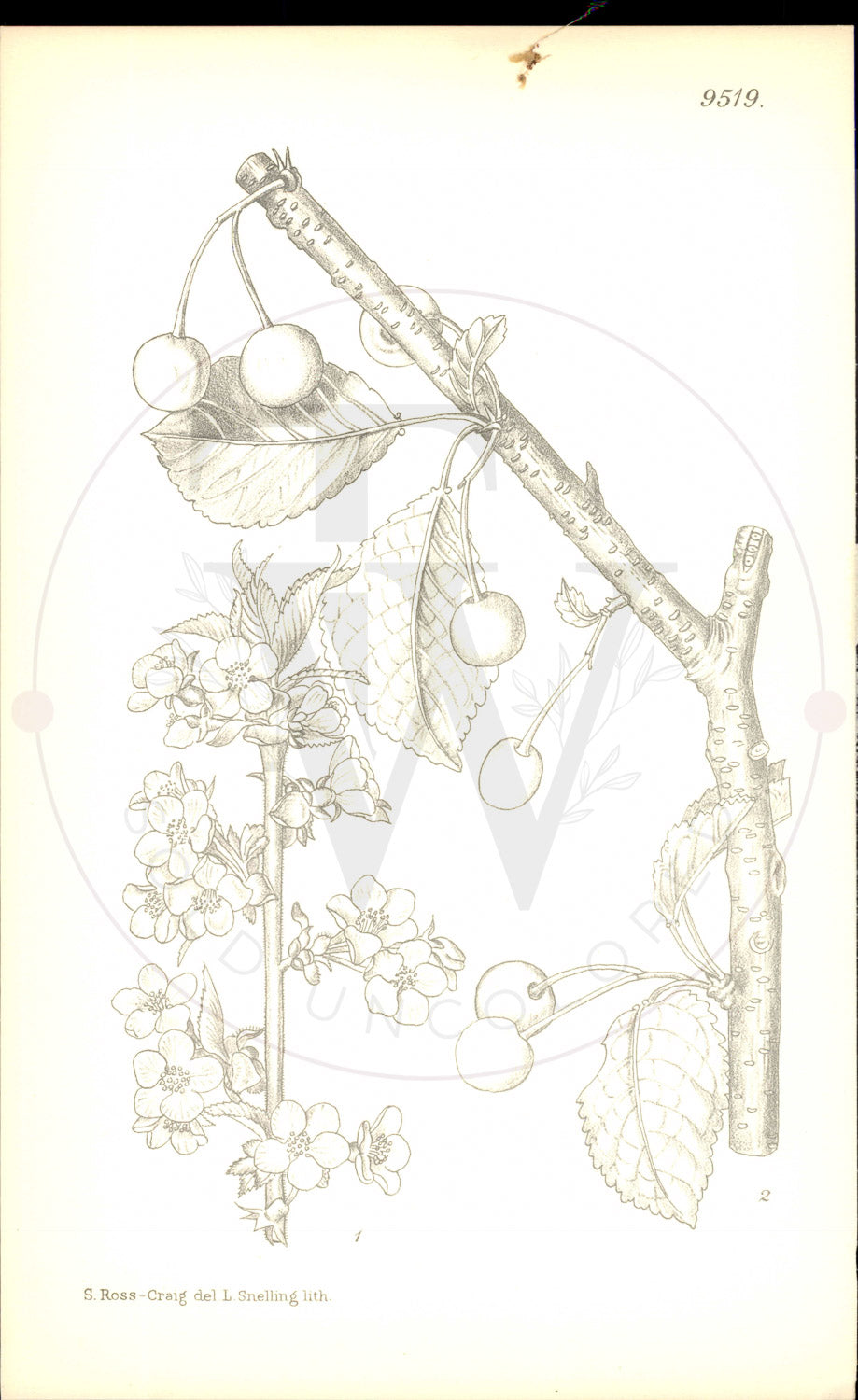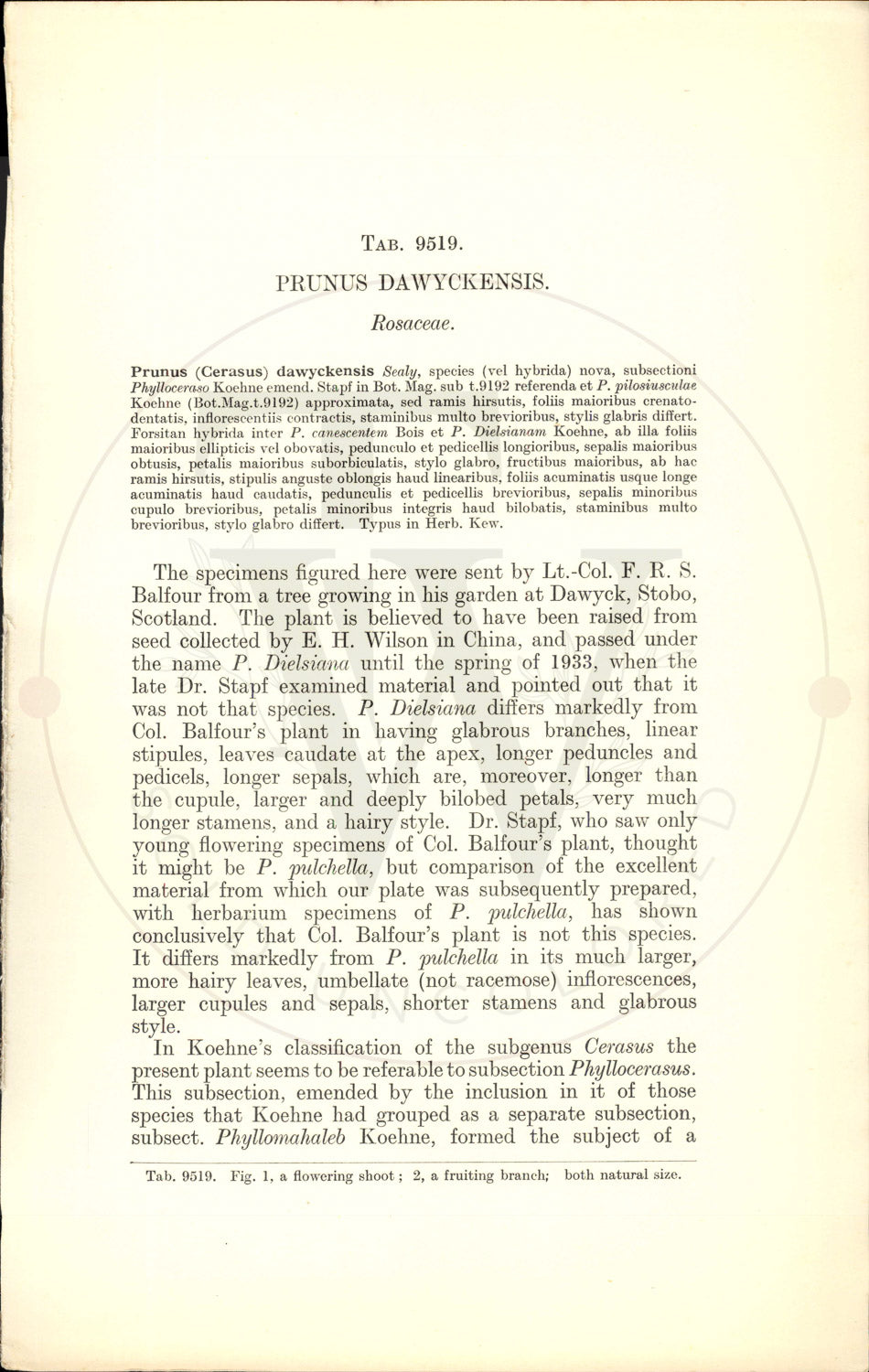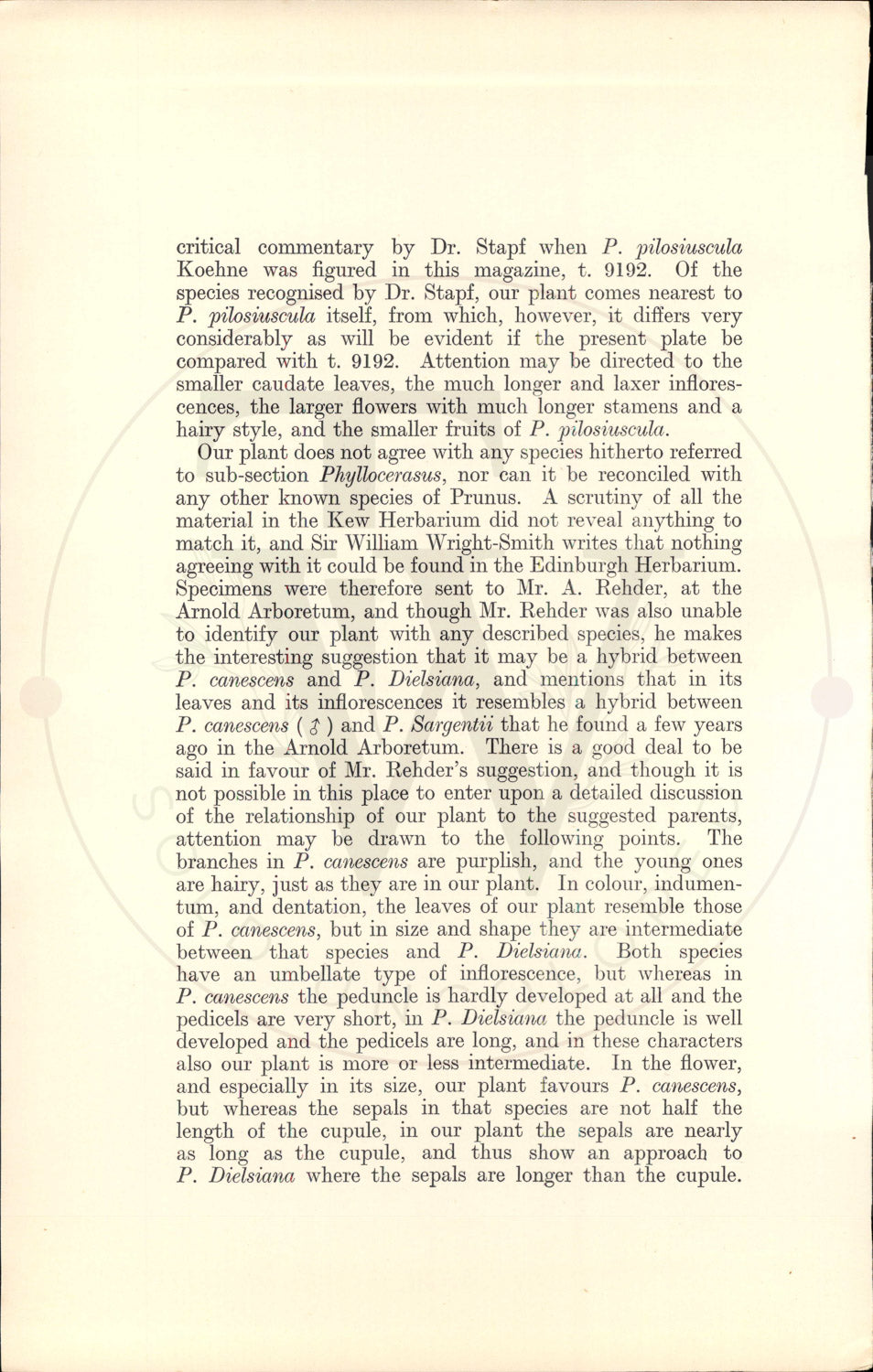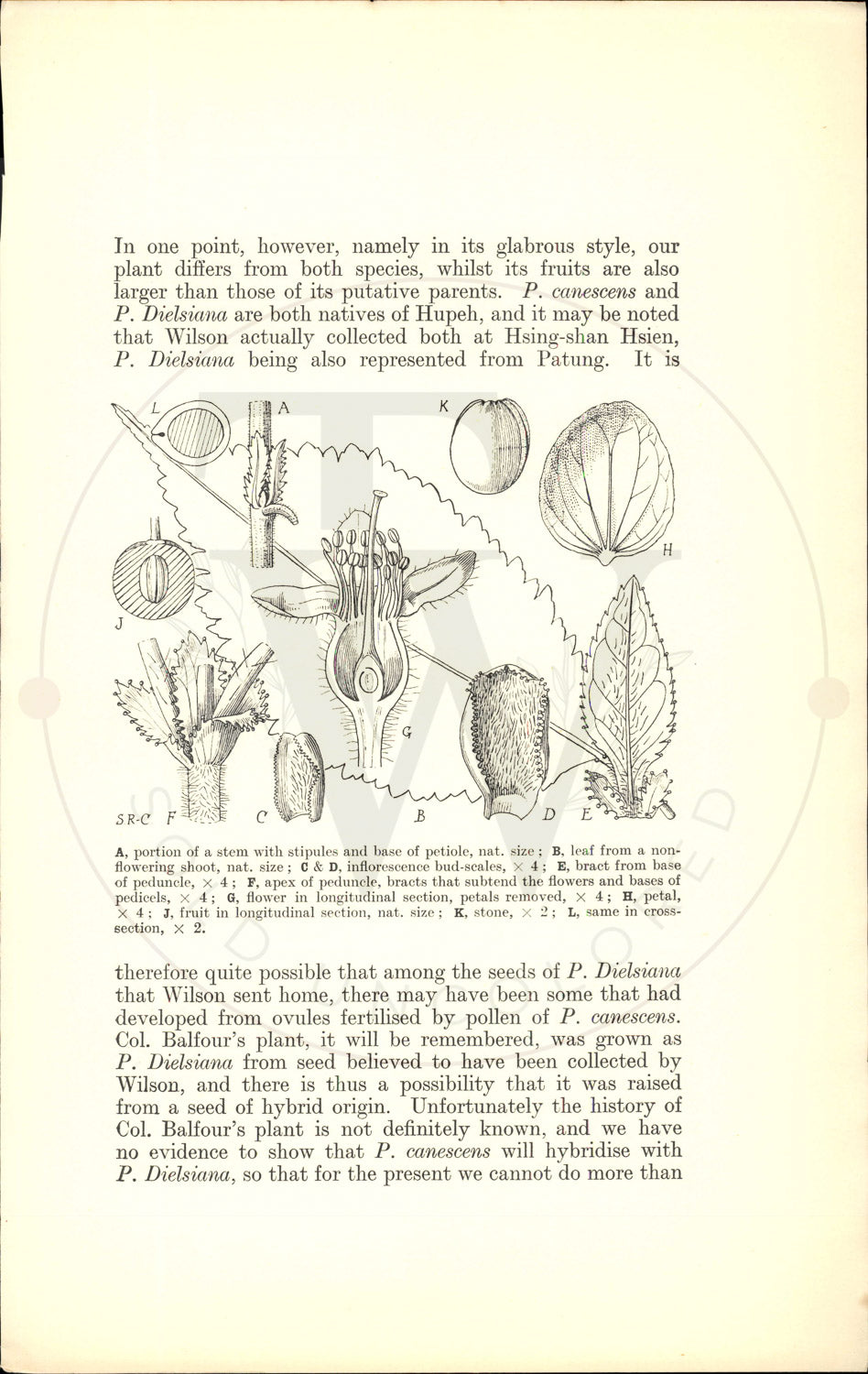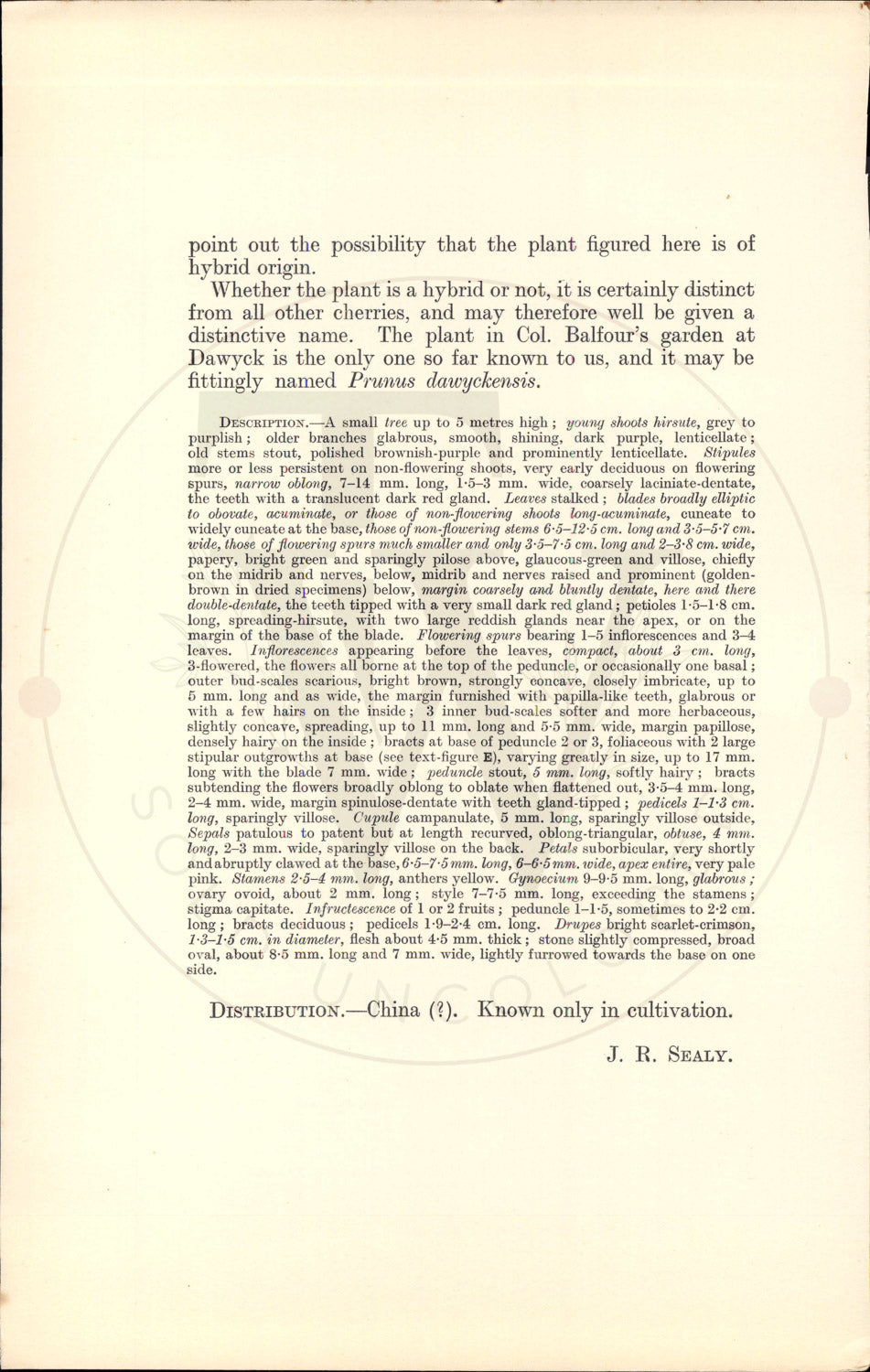Curtis Botanical Magazine
Plate 9519 - Prunus dawyckensis
Plate 9519 - Prunus dawyckensis
Couldn't load pickup availability
Curtis's Botanical Magazine - Plate 9519
Prunus dawyckensis
Family: Rosaceae • Native Region: China • Publication Date: January 1st, 1934
Distribution: -China () • Tab Author: J. R. SEALY
Botanical Description
Scotland. The plant is believed to have been raised from seed collected by E. H. Wilson in China, and passed under the name P. Dielsiana until the spring of 1933, when the late Dr. Stapf examined material and pointed out that it was not that species. P. Dielsiana differs markedly from Col. Balfour's plant in having glabrous branches, linear stipules, leaves caudate at the apex, longer peduncles and pedicels, longer sepals, which are, moreover, longer than the cupule, larger and deeply bilobed petals, very much longer stamens, and a hairy style. Dr. Stapf, who saw only young flowering specimens of Col. Balfour's plant, thought it might be P. pulchella, but comparison of the excellent material from which our plate was subsequently prepared, with herbarium specimens of P. pulchella, has shown conclusively that Col. Balfour's plant is not this species. It differs markedly from P. pulchella in its much larger, more hairy leaves, umbellate (not racemose) inflorescences, larger cupules and sepals, shorter stamens and glabrous style. In Koehne's classification of the subgenus Cerasus the present plant seems to be referable to subsection Phyllocerasus. This subsection, emended by the inclusion in it of those species that Koehne had grouped as a separate subsection, subsect. Phyllomahaleb Koehne, formed the subject of a.
About This Print
Original black and white uncolored botanical print from Curtis's Botanical Magazine (established 1787). This 9000s series print is from unissued publisher stock, never hand-colored, representing the authentic plate as it appeared in the magazine. Edited by Sir Arthur William Hill for The Royal Horticultural Society, London.
Share
